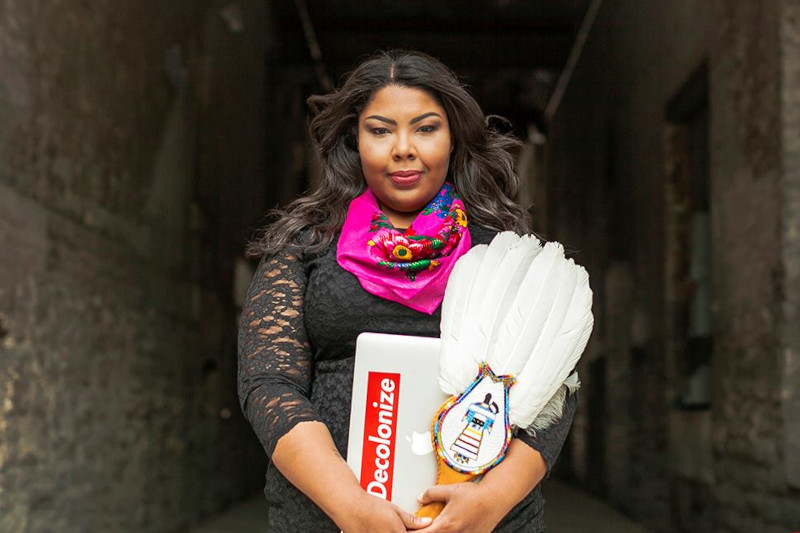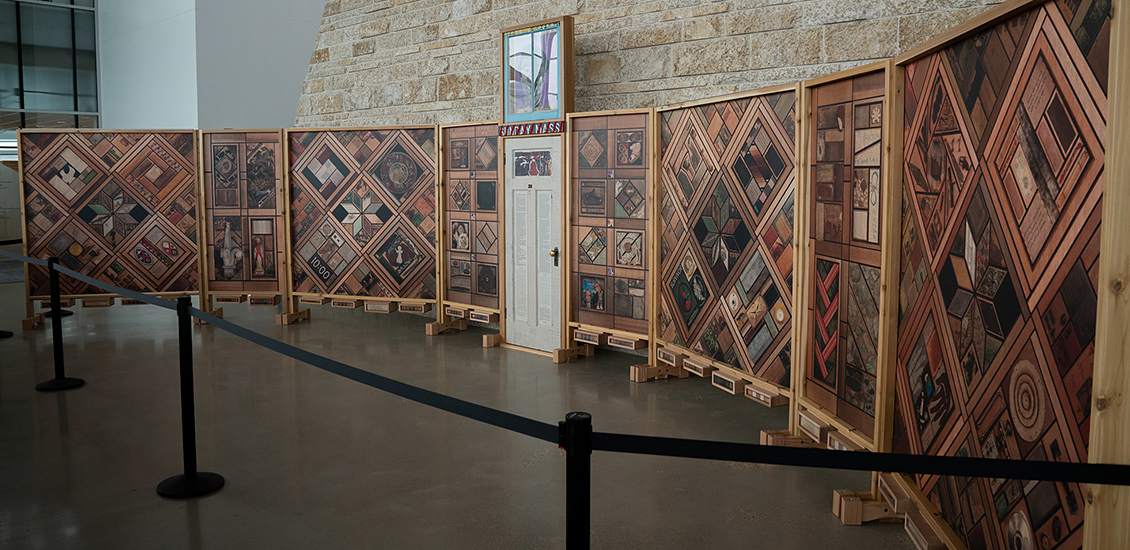I am a Haida artist, born into a long line of artists, going back several generations. I work in sterling silver, gold, and wood. I also occasionally paint items.
This article is about the Canadian Museum of History sharing its collection with a member of the Haida Nation, through a joint initiative with the YVR Art Foundation. This made the Museum’s amazing collection of Haida art something that actively supports the practices of living and working Haida people.
My art practice
I have been a working Haida artist since the summer of 1980, when I took a Haida design and argillite-carving course from my uncle, Claude Davidson. (Argillite is a slate found on Haida Gwaii, and is carved by Haida people.) I have spent periods of time working with various artists and jewellers. Each person with whom I have worked has provided me with invaluable lessons.
When working with other people, a main focus is to simply see more possibilities for a specific project, a medium, or Haida design in general. It then rests upon me to take that information and do something with it. The doing is the learning, and I learn as I go. A trip like the one I took in 2023, spending several days at the Museum, thus became a launching point for many ideas and projects.
YVR Art Foundation research grant
I had heard of a study program at the YVR Art Foundation that helped fund study trips to museums around the world. The Canadian Museum of History was on that list. I applied, and was awarded a grant.
The YVR Art Foundation is an independent, not-for-profit organization that provides support for BC and Yukon First Nations artists.
I have some books by anthropologist and former Museum CEO George MacDonald, and have long been aware of the collection. I have spent countless hours studying photographs of its best pieces. I had also spent many hours at the University of British Columbia Museum of Anthropology when I was a student there. But it had never occurred to me that museums might make it possible to explore their collections, or to closely examine specific pieces.
The study project
Not having ever done this before, I was totally at a loss about how to begin. With the guidance of Kaitlin McCormick, the Museum’s Curator of Indigenous Histories and Contemporary Cultures, West, a research plan was made.
It was quite amazing to me that not only would the Museum allow a visit, but would also assist me with planning. It turned out that Kaitlin would be my host for the week. She would share many hours of discussions on the pieces I had selected, and offer ideas on other collections to explore within the Museum.
We began to create a list, based on some suggestions from Kaitlin. The pieces would be pulled from the collections and placed in a study room, where I could spend as much time as I wanted with them during my time at the Museum. I was happy that this was coming together, and yet had no idea how special it would be to walk into the study room for the first time.
On the morning of my first day, I was greeted by Kaitlin. We chatted about a plan for the week, then headed for the study room. The collection was all there: bentwood boxes and bowls, small individual grease dishes, feast dishes, and silver bracelets. It was almost overwhelming.
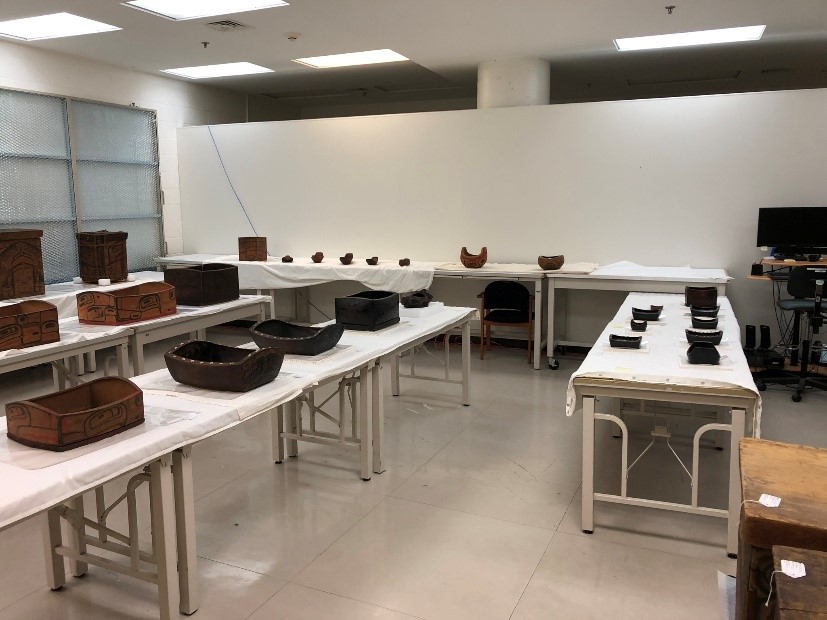
The museum set out various items from the collection in a study area.
Keith Kerrigan
I spent hours looking at the painted and carved lines. Comparing the work of one artist to another. Looking at the differences in scale, from tiny carved bowls to large bentwood bowls and boxes.
There were pieces that had clearly been created by master artists, and others that had been done by those with a less steady hand. Each offered a glimpse at what handiwork makes possible. Each showed a step in someone’s development as an artist.
These pieces held the secrets of the people who had made them and used them. These were pieces that were made to be used. And they indeed had been used: some showed signs of being soaked in eulachon grease from years of feasting.
But this was only the start.
There were also many visits to the Grand Hall to see the collection of beautifully carved totem poles. The highlight for me was the work of several Haida master carvers. Each pole was made in its own style, and each offers a little guidance as to what is possible. Each shows that a piece does not have to be perfect to be beautiful. Each shows the power of a carved line coaxed out of wood.
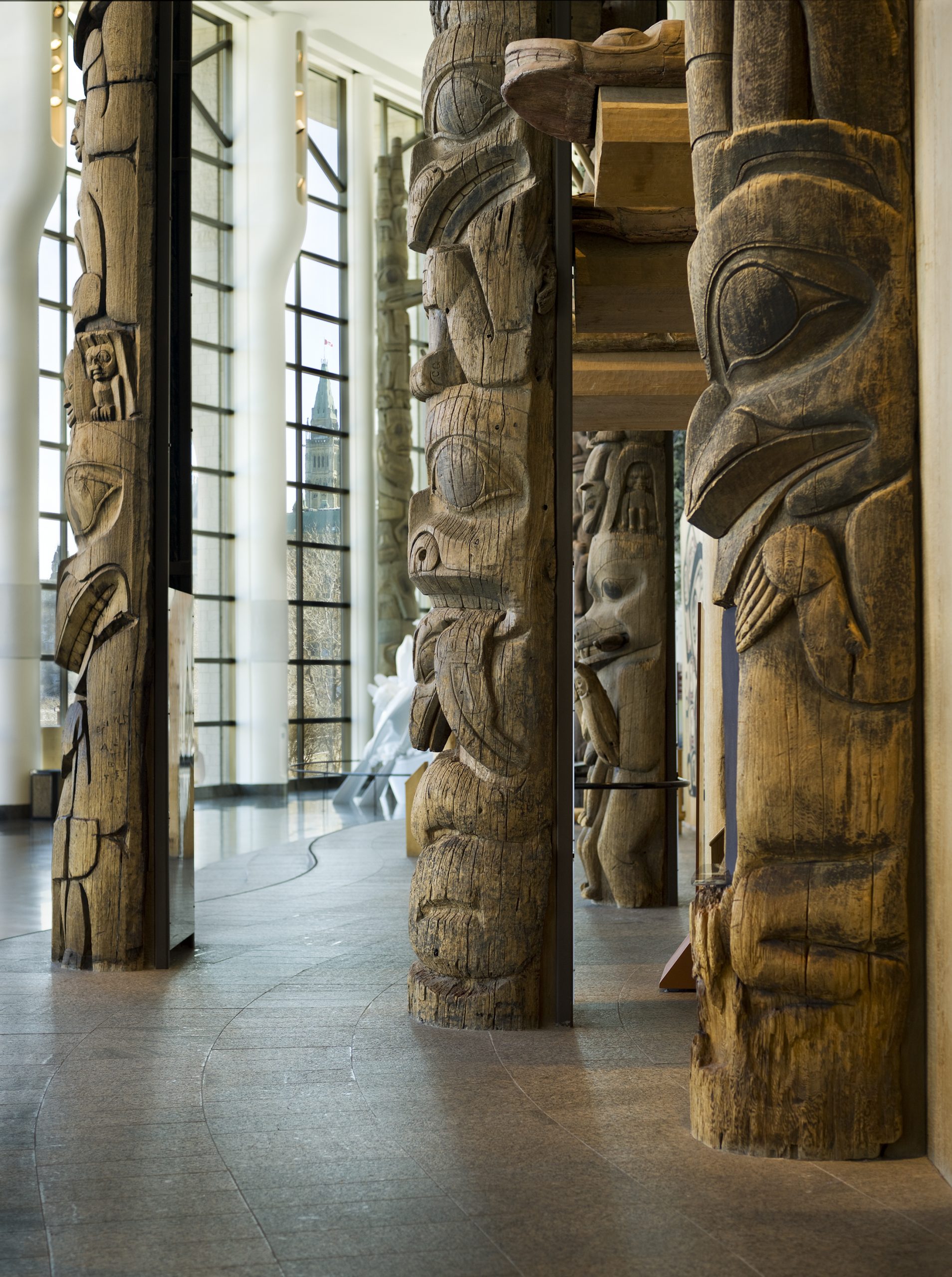
The Grand Hall houses a large collection of historical monumental poles and important works of art by Indigenous artists, including Bill Reid, Robert Davidson, Beau Dick, and Alex Janvier.
Canadian Museum of History
There were several trips to the collections storage vaults to explore and study spoons carved from the horns of mountain goats and big horn sheep, along with various argillite carvings, and more boxes and bowls. Perhaps the most incredible pieces were the Chief’s headdresses. These have carved and painted frontlets, decorated with flicker feathers and sea lion whiskers, leading to cascading layers of ermine pelts and wool draping.
A highlight for me was coming across an argillite plate that was made by my great-grandfather, Charles Edenshaw. This is an amazing piece of work, and one that I had a copy of at home. The replica had been given to my family years ago by a friend, who had purchased it at the Museum. It has been a treasure in my house, as a link to the past and a direct link to my family tradition.
Finding the original while looking through banks of storage drawers full of argillite items was totally unexpected. I was quite pleasantly surprised to have in my hand an item that my great-grandfather had made 100 or 120 years earlier.

Me, posing with the argillite plate made by my great-grandfather.
Keith Kerrigan
The Museum as a resource for study
I arrived at the Canadian Museum of History intending to study boxes and bowls, as well as some silver bracelets. I was introduced to a facility that was beyond my expectations, and staff that were the same. They helped to guide me in planning my visit and were generous with their time and expertise.
It was interesting to see that we have different ways of approaching the study of items in the Museum’s collections. I see it from the perspective of an artist and a Haida person, while they view the collections professionally, from more of a distance.
I must say that I totally enjoyed my time at the Museum, as well as my interactions with the staff, both before and after the visit. This has added new perspective to how I will look at Haida art, the art of other Indigenous Nations, and art generally.
Each piece is a part of a puzzle that demonstrates how to design and execute a project. These pieces have given me the confidence to challenge myself as an artist — to push for better designs, carvings, and engravings. I worry less about falling short, as each piece will stand as an example of my art, and my abilities at the time the project was executed.
Items developed after my visit
My project, leading up to and following my visit to the Museum, was a series of bowls that would be used for feasts or potlatches. These bowls were turned by friends of mine, onto which I carved or painted various Haida crests. I hope you enjoy these pieces.
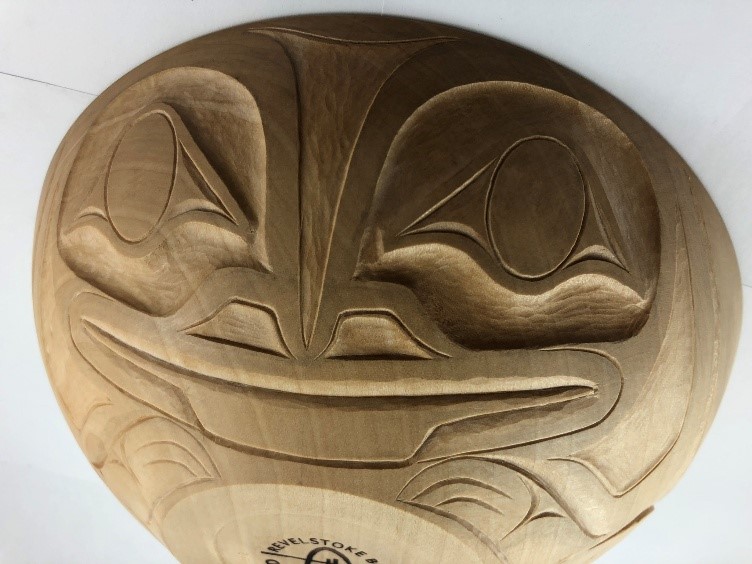
Frog Bowl
Keith Kerrigan
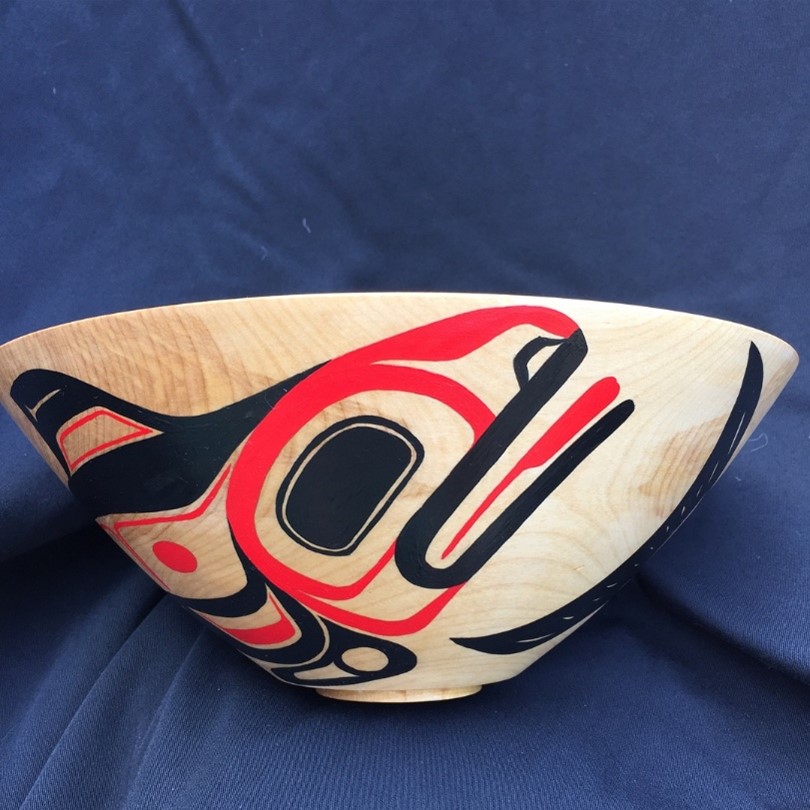
Orca Bowl
Keith Kerrigan

Keith Kerrigan
Keith Kerrigan is a member of the Haida Nation, and the Yaghulanaas clan. His family originates from the village of Dadens on Langara Island in Haida Gwaii. His current artistic practice focuses on the creation of contemporary jewellery featuring Haida designs inspired by those learned from his family, Haida stories, and the stories of his clients.

